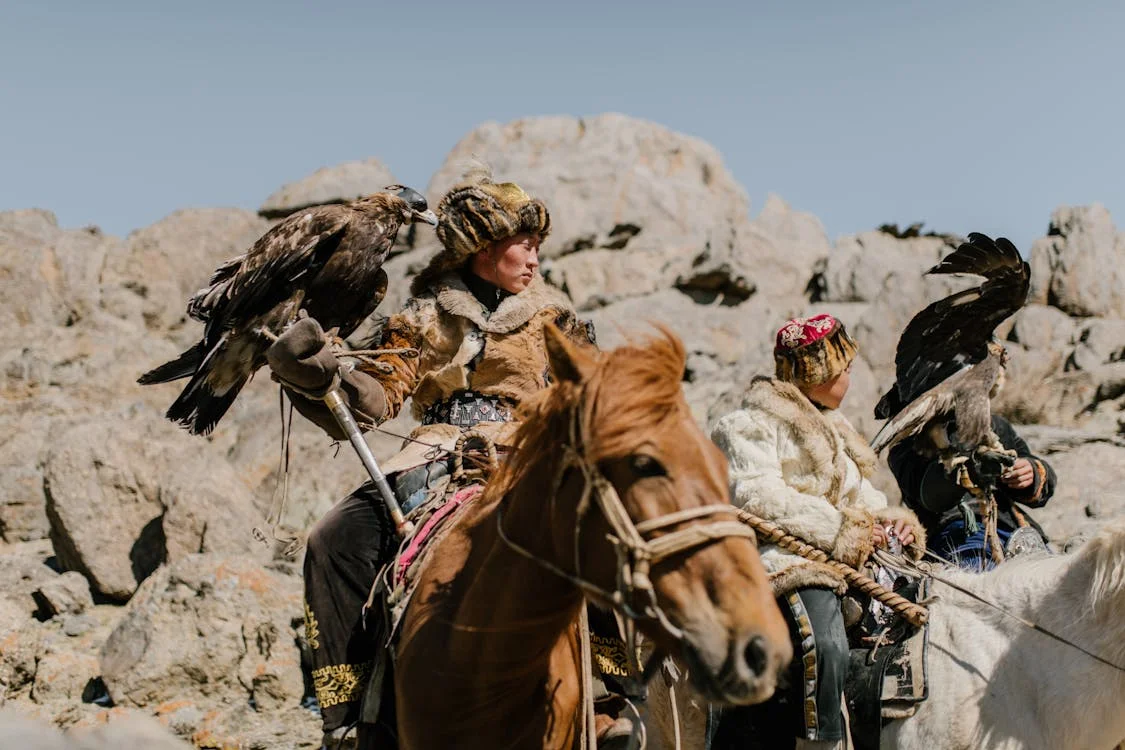Ever dreamed of standing in the middle of nowhere—with nothing but blue sky, golden grass, and the sound of wind rushing past your ears? That’s Mongolia. It’s wild, raw, and mind-blowingly big. You won’t find crowds or flashy cities here—just wide-open steppe, friendly nomads, and some of the most unforgettable landscapes on Earth. In this Mongolia travel guide, I’ll show you where to go, when to go, what to pack, and how to stay connected even in the middle of the Gobi Desert. Let’s plan an adventure that’s a little off-grid… and a lot amazing. 🐪✨
From the air Mongolia looks like God’s preliminary sketch for earth, not so much a country as the ingredients out of which countries are made: grass, rock, water and wind.
Stanley Stewart
I. Why Mongolia Is One of the Most Unique (and Underrated) Travel Destinations on Earth
Thinking of going off the beaten path? This Mongolia travel guide will show you exactly why this wild, wide-open land deserves a top spot on your bucket list.
From sweeping landscapes to nomadic culture, Mongolia offers something raw, real, and unlike anywhere else you’ve been.
Vast, Wild, and Waiting: Mongolia’s Geographical Diversity for True Adventure Seekers
Mongolia is massive. It spans 1.56 million square kilometers (about three times the size of France!) and has only 3.4 million people. That means space—real space—to wander, trek, and breathe. If you’re into adventure travel in Mongolia, this is your dream.
From alpine forests to grassy steppe to desert dunes, the scenery keeps changing—and it’s all ridiculously photogenic.
💁🏻 If you’re looking for a destination that delivers epic views and total freedom, this Mongolia travel guide is here to get you inspired.

Image: Vast Mongolian steppe landscape
A Living Nomadic Culture You Won’t Find Anywhere Else
Mongolia isn’t about museums—it’s about living traditions. Around 30% of the population still follows a nomadic or semi-nomadic life. You can stay in gers, help herd animals, and eat fresh-from-the-fire meals with your host family.
It’s simple, it’s humble—and it’s unforgettable.
In a world moving fast, Mongolia offers a rare chance to slow down and connect—and this travel guide to Mongolia helps you do just that.
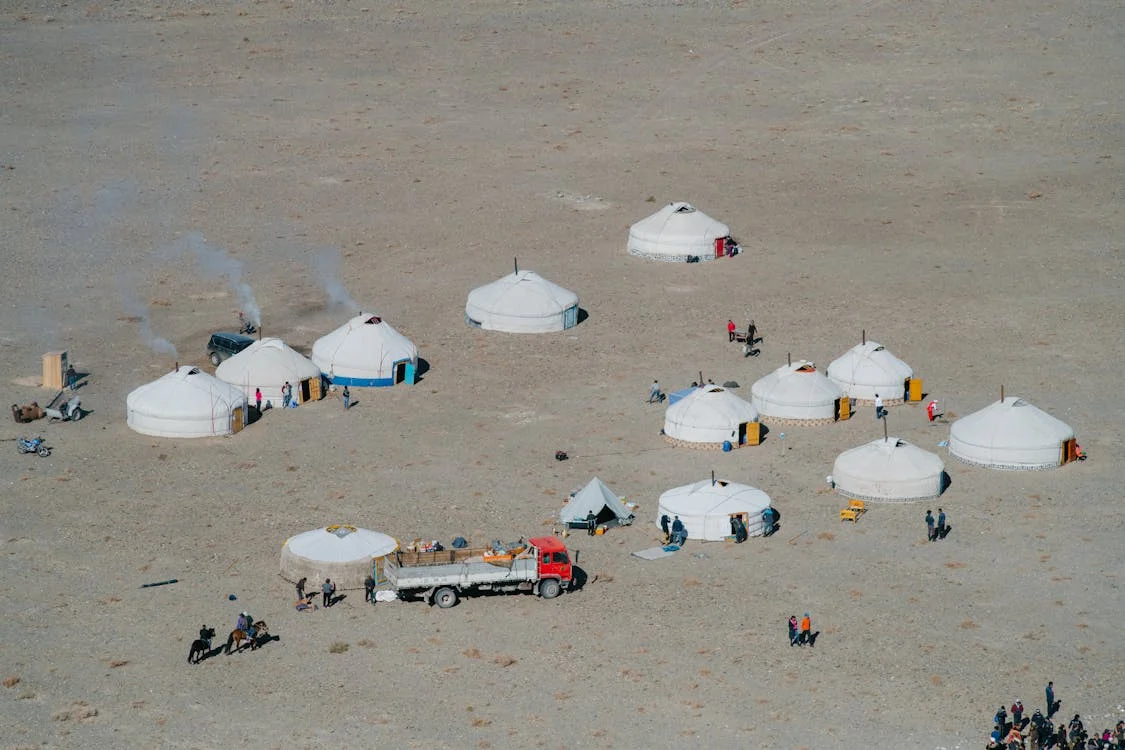
Image: Nomadic culture in Mongolia
No Crowds, Just You and the Land: Mongolia Before It Gets Discovered
One of the best parts of this Mongolia travel guide? You’re getting in before the crowds.
Tourism here is still quiet. Fewer than 600,000 international visitors come each year—compare that to the millions flooding Thailand or Vietnam. What does that mean for you?
No long lines. No tourist traps. Just authentic moments, open landscapes, and locals who aren’t tired of travelers yet.
For photographers, content creators, or anyone craving undiscovered places in Mongolia, it’s a goldmine. No photobombers. No staged experiences. Just real life, unfolding in front of you.
If you’ve ever wished you could visit a country before it becomes “cool,” this is your chance.
II. Top Mongolia Tourist Spots: Essential Destinations for Your Itinerary
So where exactly should you go in this vast, untouched land? From deserts that sing to valleys that stay frozen in summer, Mongolia is full of wild surprises.
Here are some of the best places to visit in Mongolia—each one offering its own kind of magic.
The Legendary Gobi Desert – Mongolia’s Wild, Windy, and Wonder-Filled South
No Mongolia travel guide is complete without the mighty Gobi Desert—a landscape so vast and surreal it feels like another planet. Stretching across southern Mongolia and into China, the Gobi covers over 1.3 million km² of dramatic dunes, cliffs, canyons, and fossil beds.
Here are the must-see highlights for your Gobi Desert travel adventure:
1. Khongoryn Els – Towering Singing Dunes That Echo Across the Steppe
Towering up to 300 meters high, these golden sand dunes can “sing” when the wind moves across them. It’s one of the Gobi’s most surreal moments.
2. Flaming Cliffs – Sunset-Colored Canyons & Dinosaur Fossil Heaven
Glowing red at sunset, this iconic spot is famous for its dinosaur fossil discoveries and is a must for history lovers and photographers.
3. Yolyn Am – A Hidden Ice Canyon in the Middle of the Gobi
A narrow gorge tucked into the Gurvan Saikhan mountains where ice can stay frozen into summer. Perfect for a cool hike—yes, even in the desert!
4. Khavtsgait Petroglyphs – Ancient Rock Art Etched into Gobi’s Cliffs
Ancient rock carvings that give you a peek into life thousands of years ago. Remote, mysterious, and super photogenic.
⏰ When to Go:
- Spring (May) and Autumn (September) = best weather for exploring
- Summer (June–August) = epic sunrises but can hit 40°C+, so plan accordingly
- Duration: Give yourself 5–7 days to really soak it all in
This isn’t a one-stop photo op. The Gobi is an off-the-grid adventure where each stop is a new chapter.e conditions ideal for exploration.
Looking to go deeper into off-the-grid adventure? Don’t miss our guide to hidden gems in Bhutan for rugged landscapes and unique cultural experiences.
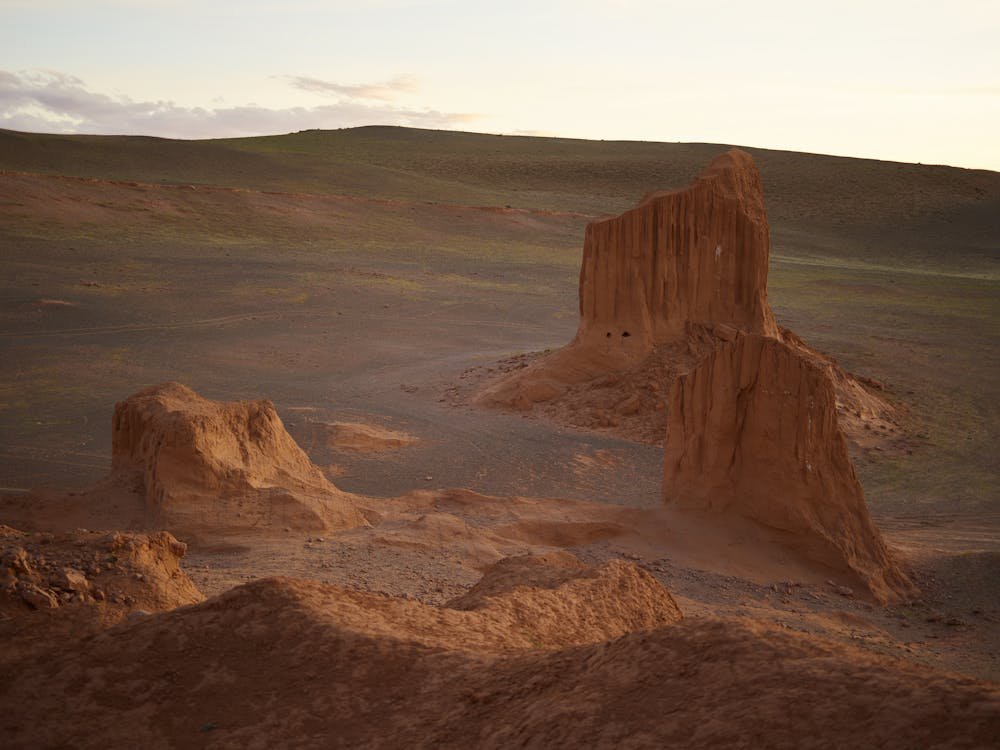
Image: Red sandstone formations of the Flaming Cliffs in the Gobi Desert at sunset.
5. Khuvsgul Lake – Mongolia’s Blue Pearl in the North
Up in Mongolia’s far north, near the Russian border, lies Khuvsgul Lake—a deep, clear, alpine lake often called the “Blue Pearl” of Mongolia. It holds over 70% of the country’s fresh water and is surrounded by taiga forest and mountains that look like they belong on a postcard.
If you’re looking for peaceful nature and unique cultural encounters, this is one of the top Mongolia tourist destinations you can’t miss.
🚣♀️ Things to Do at Khuvsgul Lake Mongolia:
- Lake adventures: Go kayaking, take a boat ride, or—if you’re brave—try a swim. Even in summer, water temps rarely pass 15°C!
- Hiking: Trails around the lake lead into lush forests and offer sweeping views of the mountains and glassy water.
- Cultural experiences: Visit the Darkhad people or nearby Tsaatan reindeer herders to glimpse Mongolia’s fascinating northern traditions.
- Winter magic: In March, the lake freezes so solid you can drive across it. The annual Ice Festival includes games, horse sleds, and incredible ice sculptures.
⏰ Best time to visit:
- Summer (June–August) for green views, milder weather, and lake activities.
- Winter (February–March) for snow, ice, and a surreal frozen world you’ll never forget.
Whether you’re into crisp hikes, cultural stories, or icy wonderlands, Khuvsgul Lake Mongolia gives you something few places in the world can: peace, beauty, and space to breathe.e.
6. Altai Tavan Bogd National Park: Mongolia’s Alpine Wonderland
Tucked deep in western Mongolia, Altai Tavan Bogd National Park is where the country truly feels wild. This is the land of high peaks, massive glaciers, eagle hunters, and ancient rock art—perfect for trekkers, climbers, and anyone craving real adventure.
Top Things to See in Altai Tavan Bogd Mongolia:
- Khuiten Peak – At 4,374m, it’s Mongolia’s highest point. A serious climb, but a dream for experienced mountaineers.
- Potanin Glacier – The largest glacier in Mongolia, stretching 20+ km. A surreal, icy world tucked among jagged peaks.
- Kazakh Eagle Hunters – Nearby villages are home to ethnic Kazakhs who still practice traditional golden eagle hunting. Meeting them feels like stepping into a living legend.
- Ancient archaeology – Stone circles, burial mounds, and petroglyphs thousands of years old are scattered throughout the region—untouched and awe-inspiring.
⏰ Best time to go:
- June to August = mildest weather, safest for trekking
- But be warned: this place is remote, cold at night, and not for the unprepared
If you want a trip that feels like a true expedition—where the views, the silence, and the stories stay with you forever—Altai Tavan Bogd Mongolia is calling.f Mongolia’s most isolated regions with minimal infrastructure. Most travelers arrange expeditions through specialized tour operators who can provide necessary equipment and experienced guides.
For a Central Asian contrast, explore ancient Silk Road cities with our Uzbekistan travel guide.

Image: Snow-capped peaks of Altai Mountains
III. Hidden Gems in Mongolia: Off-the-Beaten-Path Adventures
Everyone talks about the Gobi and Khuvsgul Lake—but Mongolia’s lesser-known spots are just as jaw-dropping. If you’re the kind of traveler who loves going where few have gone, these hidden gems in Mongolia are for you.
Northern Treasures Beyond Khuvsgul Lake
While Khuvsgul Lake attracts most northern Mongolia visitors, the truly adventurous should explore these hidden gems in Mongolia’s northern territories:
7. Bayanzurkh, Khovsgol – Peaceful Wilderness with No Crowds
If you’re ready to explore beyond the main tourist trail, Bayanzurkh in northern Khovsgol is one of those rare places where nature still feels untouched. Just 160 km from Khuvsgul Lake, this quiet mountain area is perfect for travelers who love peace, fresh air, and a bit of adventure.
What makes it special?
- Ushir Waterfall – roaring with meltwater in late June, surrounded by wildflowers
- Boshloi Rock – a dramatic cliff that stands tall over the valley
- Quiet rivers and open meadows where you can pitch a tent or just breathe
You’ll need a 4×4 vehicle to get here (and maybe a playlist for the bumpy road), but that’s part of the fun. For the full experience, spend a night camping by the river or stay with local herding families—you’ll get warm tea, starry skies, and stories by the fire.
Bayanzurkh isn’t on most maps, but that’s exactly why it stays magical. A true hidden gem in Mongolia, waiting for the few who make the journey.
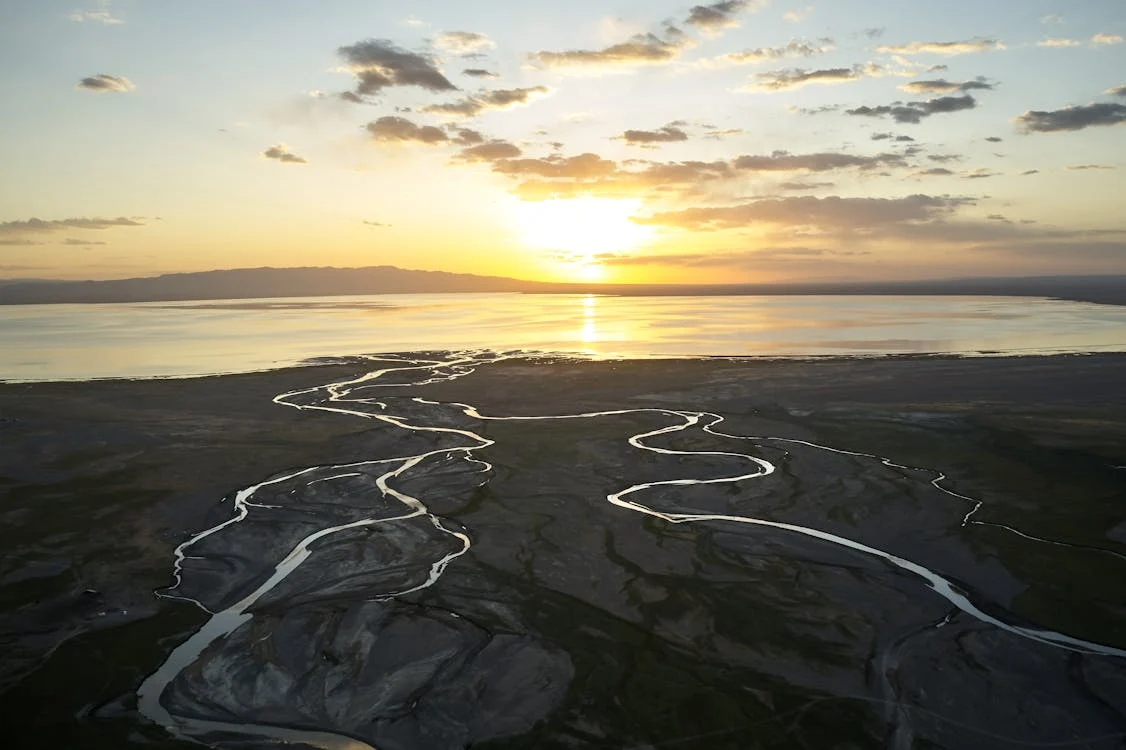
Image: Bayanzurkh, Khovsgol
8. East Taiga – Meet the Reindeer People of Mongolia
If you’re looking for a travel story you’ll tell for the rest of your life, head to the East Taiga. This remote forested region in northern Mongolia is home to the Tsaatan people—one of the last remaining reindeer-herding communities on Earth.
Getting there isn’t easy. From the nearest town, it’s a 10+ hour drive on rugged tracks, followed by a 60 km journey on horseback through wild, untouched mountain terrain. But every sore muscle is worth it.
The Tsaatan live in tepee-style tents called ortz, not the gers seen across most of Mongolia. Their lives revolve around their reindeer—used for transport, milk, cheese, and warmth in the freezing Taiga climate.
You won’t find tourist shows or staged experiences here. Instead, you’ll sit by fires, ride reindeer through pine forests, and see what it means to live in harmony with nature in one of the harshest environments on Earth.
For those craving deep cultural immersion and raw connection, a visit to the Tsaatan reindeer herders in East Taiga Mongolia is unlike anything else in the world.

Image: Tsaatan reindeer in Mongolia
Central Mongolia’s Undiscovered Wonders
Want the thrill of adventure without venturing too far from Ulaanbaatar? Central Mongolia is your sweet spot. This region is easier to reach than the far north or west, yet still packed with quiet, authentic, and wildly beautiful places most tourists never see.
Here are two hidden gems in central Mongolia that deserve a spot on your itinerary.
9. Kherkhruu Three Lakes: Wilderness Accessible from the Capital
Only about 180 km from Ulaanbaatar, Kherkhruu Three Lakes is a hidden pocket of alpine wilderness rarely mentioned in guidebooks. Tucked among high cliffs and larch forests, the three lakes sit at different elevations and are connected by winding streams.
Getting there isn’t exactly a walk in the park—most visitors arrive by horseback or helicopter—but that’s part of what makes it special.
- Wild terrain: Marshes, dense forest, rivers, and cliffs
- Wildlife: Red deer, wild boar, and lots of birdlife
- Best done with: A local guide and a few days to camp, hike, and find secret viewpoints
If you want central Mongolia travel that feels completely unplugged—this is it.
10. Ikh Gazryn Chuluu: Desert Culture Beyond the Gobi
When you’ve had your fill of Gobi dunes, head east to Ikh Gazryn Chuluu in Dundgovi Province. This otherworldly granite landscape looks like something out of a sci-fi movie, with dramatic rock formations, caves, and sacred shrines tucked between the boulders.
According to legend, even Genghis Khan once hid out here. Today, it’s a place to explore caves, learn local folklore, and connect with Mongolian desert culture in a quieter, more spiritual way.
🪷 Don’t miss:
- Caves with ancient Buddhist shrines and petroglyphs
- Live performances of the traditional long song at the local theater
- Uyakhan Zambuu Tiviin Naran Art Festival every August—music, dance, and culture in a breathtaking setting
Ikh Gazryn Chuluu is one of those hidden places in Mongolia where landscape, legend, and culture come together beautifully.
Southern Frontiers: Beyond the Famous Dunes
Southern Mongolia is best known for the Gobi Desert and its rolling sand dunes—but just beyond the tourist radar, you’ll find landscapes that are just as jaw-dropping, and way less crowded.
11. Tsagaan Suvarga: Mongolia’s Grand Canyon of Color
Far out in Dundgovi Province, Tsagaan Suvarga (meaning “White Stupa”) is one of Mongolia’s most underrated natural wonders. Locals call it the Grand Canyon of Mongolia—and when you see the Mars-like cliffs rising 30 meters high, you’ll understand why.
Over millions of years, wind and water have carved the land into glowing bands of red, orange, purple, and white, thanks to layered mineral deposits. The name comes from the way the cliffs resemble a row of Buddhist stupas from afar.
🌄 Best time to visit:
- Sunrise or sunset, when the light hits just right and the entire canyon seems to glow
- Bring a camera—it’s a dream spot for landscape photographers
📍 Why go:
- Fewer tourists = peaceful, unhurried experience
- Unique colors and formations not found anywhere else in Mongolia
- Epic views that look straight out of a sci-fi movie
If you’re into hidden natural wonders, Tsagaan Suvarga Mongolia is the kind of place you’ll want to tell everyone about—but also secretly keep to yourself.
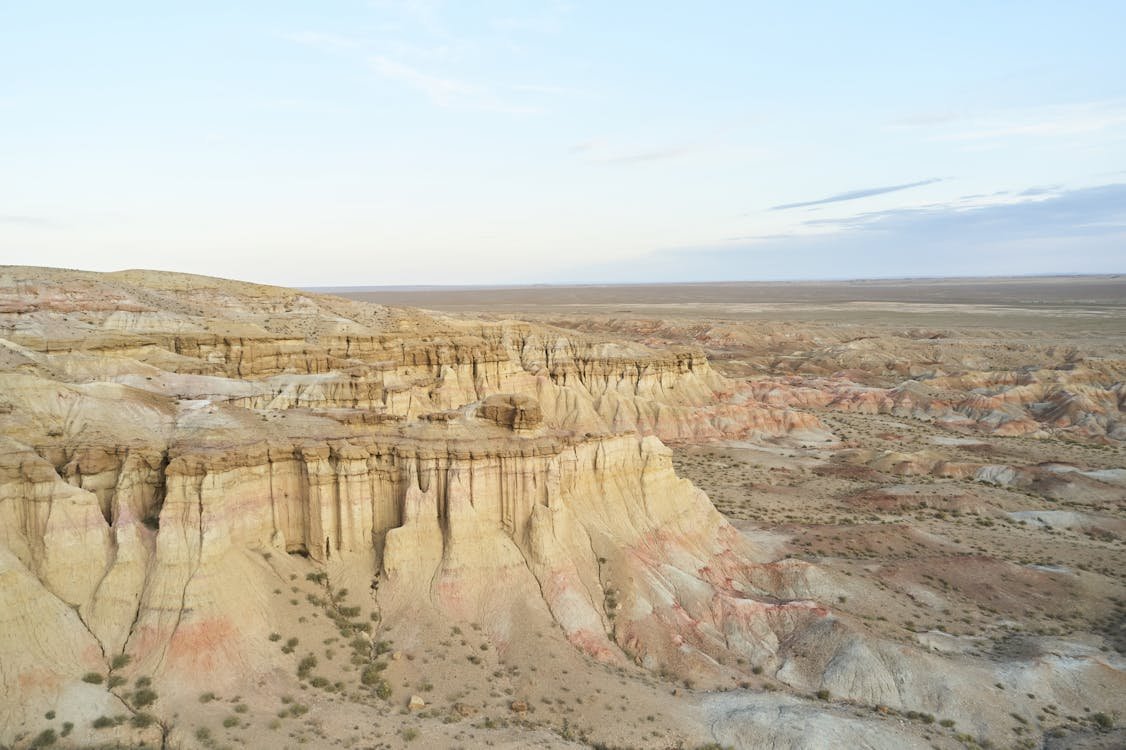
Image: Colorful cliff formations of Tsagaan Suvarga
IV. Authentic Cultural Experiences in Mongolia’s Wilderness
These authentic cultural experiences in Mongolia offer more than sightseeing—they let you step into a way of life that’s deeply rooted, beautifully simple, and unlike anywhere else on Earth.
Living With Nomads – Stay Inside Mongolia’s Traditional Way of Life
If you’re looking for a travel experience that’s raw, real, and deeply human, nothing compares to living with a Mongolian nomadic family. This isn’t just a cultural “activity”—it’s a full-on immersion into a lifestyle that has remained mostly unchanged for centuries.
You’ll wake up in a cozy ger, share tea with your hosts, and spend your days learning how life works when the land sets the rhythm.
Some highlights of daily nomadic life include:
- Herding animals: Help care for sheep, goats, yaks, or horses. You might even learn how to milk a mare.
- Traditional cooking: Try your hand at making aaruul (dried curds), airag (fermented mare’s milk), or khorkhog—meat and veggies cooked with hot stones inside a metal pot.
- Ger living: Discover how this iconic felt tent is perfectly designed for nomadic life—warm, movable, and surprisingly efficient.
- Crafts & skills: Watch (or join!) in felt-making, used for everything from walls to boots.
These homestays offer more than just memories—they offer perspective. You’ll see how much can be done with little, and how closely tied Mongolian life is to nature and the seasons.
🧭 Travel tip: Choose a Mongolian homestay through a responsible operator who works directly with local families and ensures fair compensation. For the most authentic experiences, head to remote regions far from tourist hubs—that’s where the magic really happens.ore remote regions away from established tourist routes.
Naadam Festival: Mongolia’s Olympic Tradition
If you’re in Mongolia in early July, don’t miss the Naadam Festival—the country’s biggest and most beloved cultural event.
Naadam is like Mongolia’s version of the Olympics. It’s all about celebrating tradition through three classic sports: wrestling, horse racing, and archery. But it’s more than just competition—it’s a national holiday full of color, music, food, and fun.
You can watch the biggest Naadam celebration in Ulaanbaatar, but if you want something more local and relaxed, head to a small town or countryside festival. It’s often more personal, with fewer crowds and more chances to interact with locals.
Here’s what you’ll see:
- 🐎 Horse racing: Children as young as 6 ride across the open steppe in long-distance races
- 🤼 Wrestling: No time limit, no weight classes—just strength, skill, and tradition
- 🏹 Archery: Archers use traditional bows to shoot at stacked leather targets
- 🎶 Cultural shows: You’ll hear throat singing, watch long song performances, and see traditional dancing
💁🏻 Whether you’re into sports, photography, or just soaking up good vibes, the Naadam Festival in Mongolia is the perfect way to experience the country’s spirit—lively, proud, and full of heart.or, action, and cultural significance of Mongolia’s most important annual celebration.

Image: Mongolian wrestlers in traditional costume competing at a local Naadam festival
Eagle Hunting: Ancient Tradition in the Altai Mountains
In the far west of Mongolia, deep in the Altai Mountains, the Kazakh people still practice one of the world’s oldest hunting traditions: eagle hunting. For over 1,000 years, Kazakh hunters have trained golden eagles to help catch wild animals like foxes during the cold winter months. It’s a powerful bond between human and bird, built on respect and trust.
Visitors can experience this tradition in several ways:
- Eagle Hunter Homestays: Stay with Kazakh families who maintain hunting eagles, learning about their care and training
- Golden Eagle Festival: Held annually in October, this festival showcases eagle hunting skills through competitions and demonstrations
- Winter Hunting Expeditions: For the truly adventurous, join actual hunting trips during winter months when eagles are used to hunt foxes and other small game
💁🏻 The eagle stays with the hunter for about 10 to 15 years, then it’s released back into the wild—free to live and breed as nature intended. If you want to witness something truly special and deeply rooted in tradition, eagle hunting in Mongolia is an experience you’ll never forget.
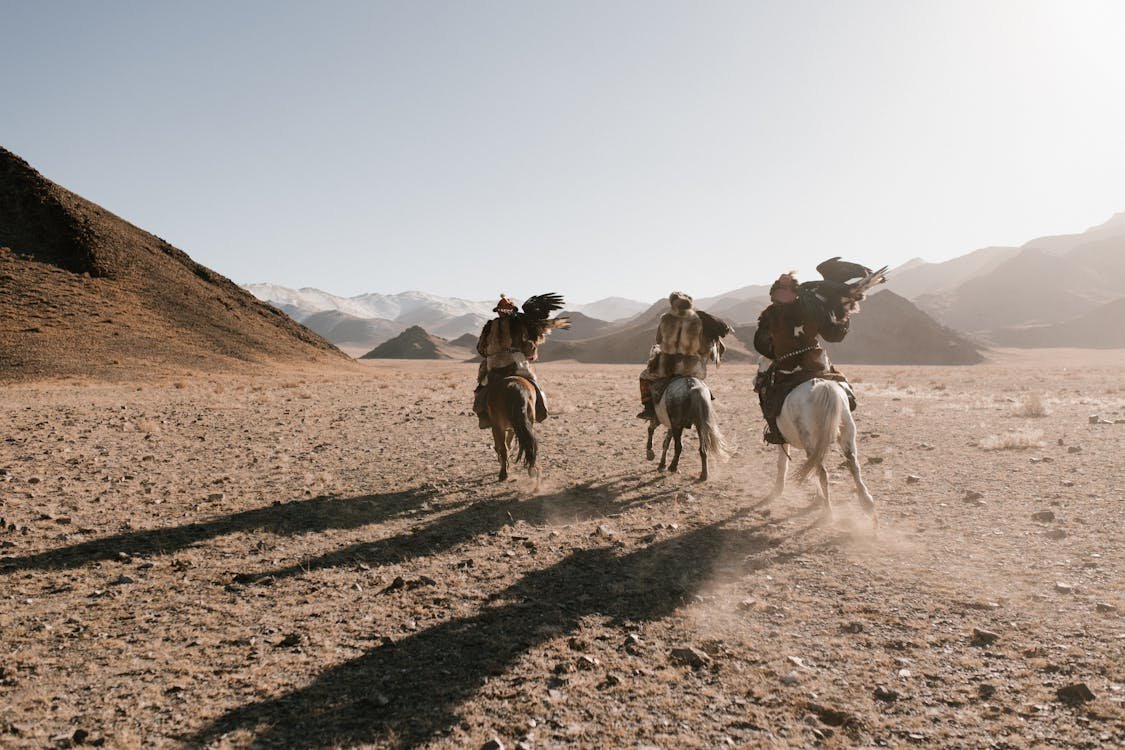
Image: Mongolia
🌏 Planning an off-the-beaten-path adventure? Here’s your full guide to visiting Bhutan’s hidden gems — another epic stop for travelers who crave meaning over mainstream.
V. Practical Mongolia Travel Tips for the Connected Adventurer
When planning your trip with this Mongolia travel guide, one of the most important things to get right is timing. Mongolia’s seasons aren’t just different—they’re dramatic. From blistering heat to -40°C chills, when you go will shape your entire experience.
Best Time to Visit Mongolia
- ☀️ Summer (June–August) is the most popular season, with warm weather and major highlights like the Naadam Festival, the Gobi Desert, and Khuvsgul Lake. It’s the easiest time for first-timers to explore the country comfortably.
- 🍃 Spring (May) brings fewer crowds, blooming valleys, and baby animals across the steppe—perfect for nature lovers and photographers.
- 🍂 Fall (September–October) offers golden landscapes and crisp air, especially beautiful in the north. It’s also when the famous Golden Eagle Festival takes place.
- ❄️ Winter (November–April) is only for the bold—but if you’re up for snow, silence, and stunning experiences like reindeer camps and frozen lake festivals, you’ll never forget it.
🗓️ When to Visit Mongolia: A Quick-View Guide
(from your trusty Mongolia travel guide 📍)
| Season | Weather & Conditions | Best For | Highlights |
|---|---|---|---|
| ☀️ Summer (June–August) | 🌡️ Warm & mostly dry ⛅ Occasional rain | ✅ First-time visitors ✅ Classic Mongolia trips | • Naadam Festival (July) • Khuvsgul Lake, Gobi, Central steppe • Most accessible travel season |
| 🌸 Spring (May) | 🌤️ Mild, fresh air 🌼 Blooming landscapes | ✅ Nature lovers ✅ Off-season travelers | • Baby animals in nomadic herds • Fewer tourists • Ideal for gentle hikes |
| 🍂 Fall (Sept–Oct) | 🍁 Crisp air, golden light 🍃 Cool nights | ✅ Photographers ✅ Culture seekers | • Fall foliage in the north • Golden Eagle Festival (Oct) • Soft lighting for photography |
| ❄️ Winter (Nov–Apr) | 🥶 Extreme cold 🌨️ -20°C to -40°C | ❄️ Adventure travelers ❄️ Cultural immersion fans | • Tsaatan winter camps • Eagle hunting trips • Ice festivals (e.g., Khuvsgul Lake) |
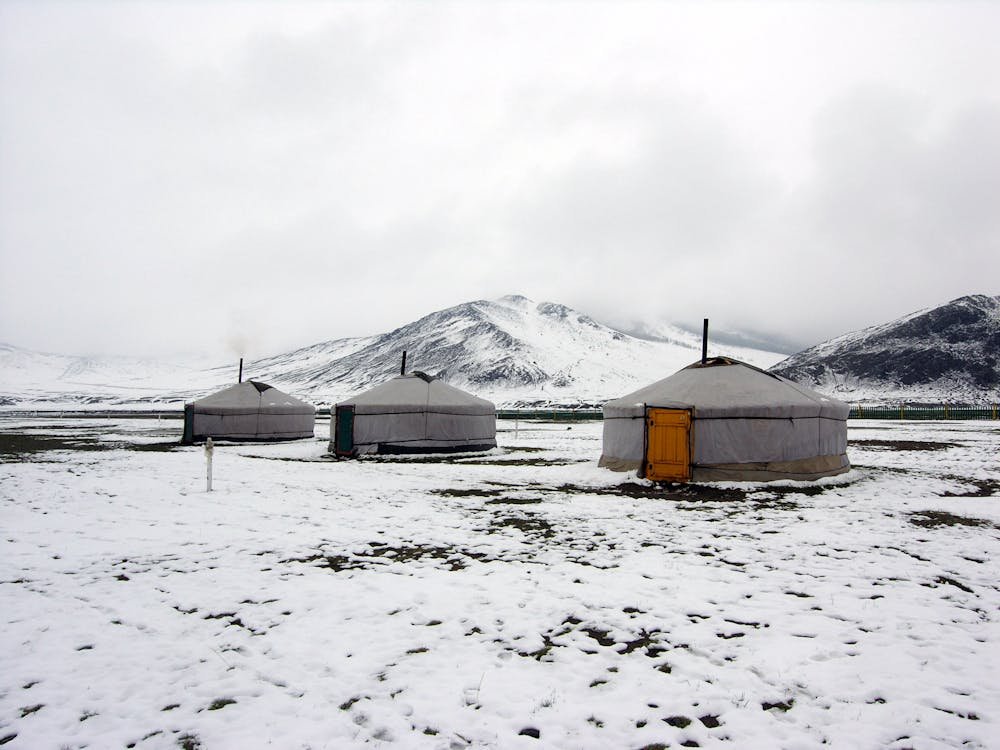
Image: Snow-covered gers in winter with smoke rising from chimneys against blue sky
Connectivity Solutions for the Remote Traveler
Staying connected during your Mongolia travel presents unique challenges due to the country’s vast size and sparse infrastructure. However, with proper preparation, you can maintain essential connectivity even in remote areas:
Mobile Coverage in Mongolia:
- Major providers include Mobicom, Unitel, and Skytel
- Good coverage in Ulaanbaatar and provincial centers
- Variable coverage in tourist areas like Khuvsgul Lake and parts of the Gobi
- Minimal or no coverage in very remote areas like Altai Tavan Bogd
Connectivity Solutions for Travelers:
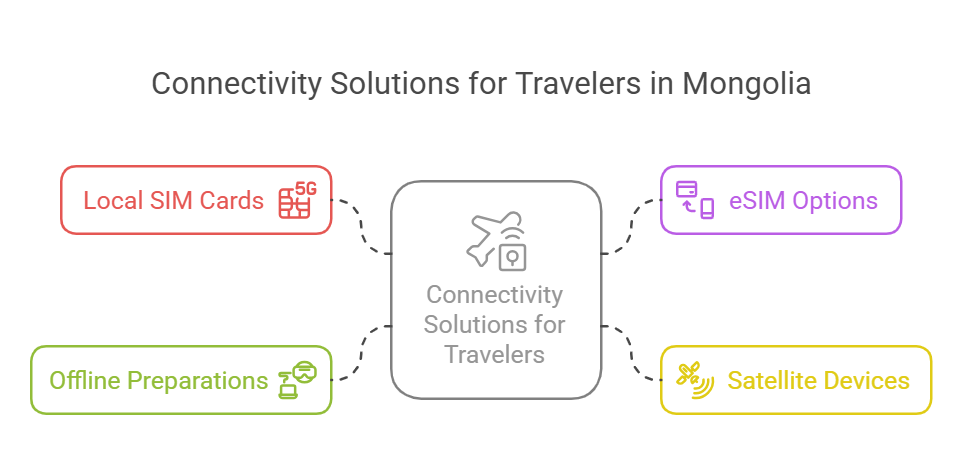
- Local SIM Cards: Available at the airport and in Ulaanbaatar, offering affordable data packages
- eSIM Options: Consider Gohub’s Mongolia eSIM for seamless activation before arrival
- Satellite Devices: For critical communications in remote areas, consider renting satellite phones or personal locator beacons
- Offline Preparations: Download offline maps, translation tools, and essential information before heading to remote areas
Planning to roam Mongolia’s steppes and gers? Beat spotty wifi by grabbing a travel eSIM suitable for Mongolia – check our best eSIM options for Asia to stay online wherever your adventure takes you.
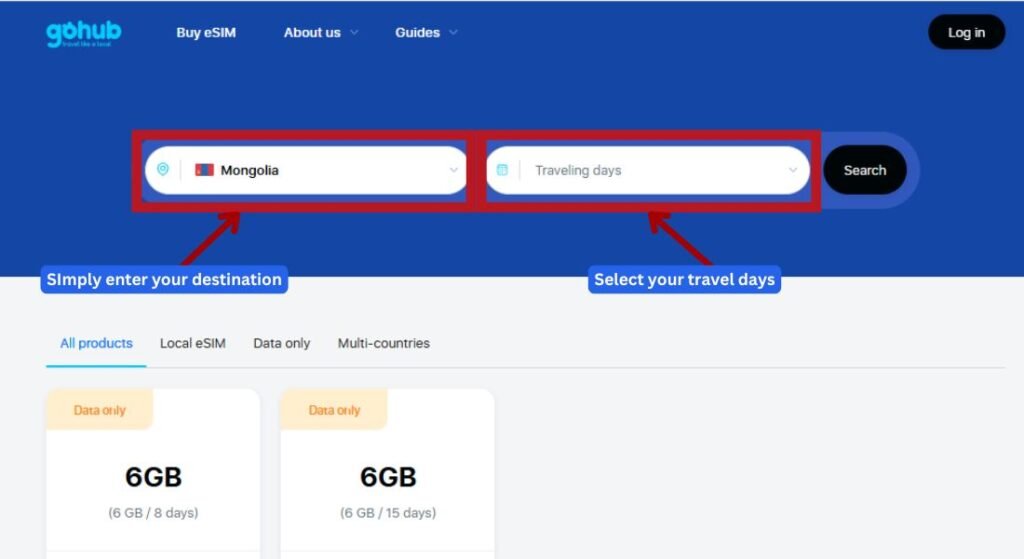
Image: Screenshot of the GoHub eSIM webpage, highlighting the destination input field with “Mongolia” selected, illustrating how users can easily search for eSIM data plans.
For digital nomads and those needing reliable internet access, plan your itinerary around connectivity needs, perhaps alternating remote wilderness experiences with stays in provincial centers where you can catch up on work and communications.
Transportation Strategies for Mongolia’s Vast Landscapes
🚐 Transportation Tips from Your Mongolia Travel Guide
Getting around Mongolia isn’t always easy—but that’s part of the adventure. With vast distances, few paved roads, and wild landscapes, how you travel can shape your whole experience.
Here’s what you need to know about moving through the Land of the Blue Sky:
✈️ Domestic Flights – Fastest Way to Cover Big Distances
- Great for reaching faraway places like Bayan-Ölgii or Khuvsgul Lake
- Carriers like MIAT and Hunnu Air serve provincial airports
- Book early in summer—flights fill up fast and weather can cause delays
✈️ Flying to remote provinces? Book domestic flights with MIAT or Hunnu Air early—seats fill fast in summer.
🚙 Off-Road Adventures – The Real Mongolian Road Trip
- 4WD vehicles are essential for most regions beyond the main highway
- Dirt tracks = freedom, but also risk—best done with a local guide or tour operator
- Self-driving is possible, but only recommended if you have serious off-road experience
- Most adventure travelers book a driver + guide combo for safety and local insight
🚐 Public Transportation – Cheap but Limited
- Shared vans (mikro) connect major towns but don’t follow fixed schedules
- Some local buses exist near tourist zones but won’t take you far off the beaten path
- Budget backpackers often mix public transit + organized tours to cover remote areas efficiently
Pro Tip: Plan long-distance legs by air, then go off-road with a local driver for the real adventure. And no matter where you go, GoHub’s eSIM will keep you connected—even when the roads disappear.
Heading to Kyrgyzstan next? Don’t forget to compare your options with our Megacom Kyrgyzstan eSIM guide for seamless border-crossing connectivity.
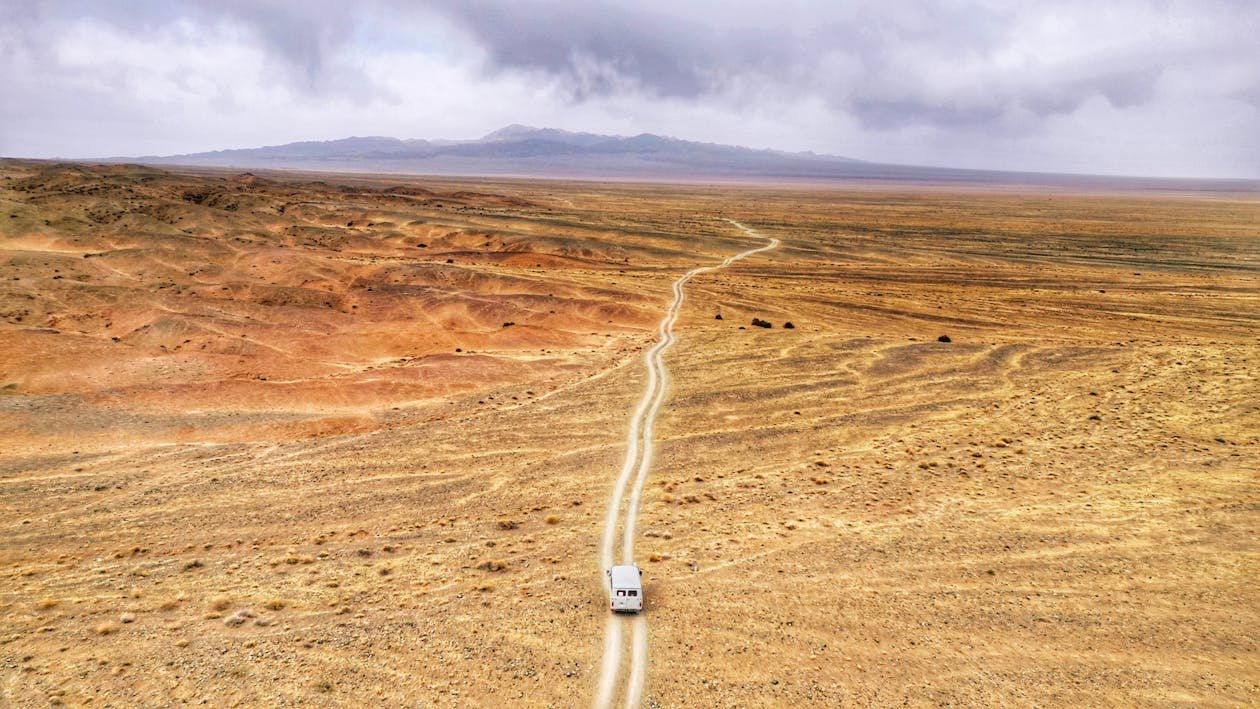
Image: 4WD vehicle crossing a river in remote Mongolian landscape with no roads visible
Responsible Tourism in Mongolia’s Fragile Wilderness
Exploring Mongolia’s wild landscapes and rich traditions is a gift—but with that comes the responsibility to tread lightly and give back meaningfully. This Mongolia travel guide isn’t just about where to go, but how to go with care.
Here’s how to make your journey more thoughtful and impactful:
🤝 Support Local Communities
Small choices go a long way in helping Mongolians benefit from tourism directly.
- Stay in locally owned ger camps and book with Mongolian-run tour operators
- Buy handmade souvenirs directly from artisans instead of mass-produced shops
- Look for community-based tourism projects, like those in the Khantay region (Bulgan Province), where your visit helps fund education and local development
🛖 Show Cultural Respect
Mongolian hospitality is legendary—but it’s rooted in deep tradition. A little cultural awareness shows big respect.
- Always ask before taking photos of people or inside gers
- Enter a ger with your right foot first, and don’t step on the threshold
- When offered food or drink, accept graciously, even if just a small taste
- Join cultural activities with curiosity, not as a spectator sport
🌿 Travel Lightly on the Land
Mongolia’s ecosystems are fragile—especially in desert and alpine areas. Protect them for future travelers and locals alike.
- Follow Leave No Trace principles—pack it in, pack it out
- Use water carefully, especially in dry regions like the Gobi
- If flying long distances, consider using a carbon offset program to balance your footprint
| ✅ Do | 🚫 Don’t |
|---|---|
| Support locally owned ger camps and Mongolian-run tour operators | Avoid large international chains with no local benefit |
| Buy handmade souvenirs directly from local artisans | Skip mass-produced trinkets sold at tourist traps |
| Ask for permission before taking photos of people or inside gers | Don’t assume it’s okay to snap photos without asking |
| Enter gers with your right foot and accept food with both hands | Don’t step on the threshold or refuse hospitality |
| Use water mindfully, especially in dry regions like the Gobi | Don’t take long showers or leave taps running |
| Pack out all your trash and follow Leave No Trace principles | Don’t litter or leave anything behind in nature |
| Offset your carbon footprint when flying long distances | Don’t ignore the environmental impact of your travel |
| Join cultural activities with curiosity and respect | Don’t treat traditions like tourist performances |
Visual: Do & Don’t Cheat Sheet
With a few mindful choices, you can turn your trip into something more than just a vacation. You’ll leave with stories, but also the knowledge that your adventure helped protect what makes Mongolia so special.
🤝 Want to travel with impact? Support community-based tourism through Ger to Ger.

Image: Ethnic people in Mongolia
Packing Essentials for Mongolia’s Extreme Environments
From desert heat to mountain chill, Mongolia’s weather is no joke. Temperatures can swing 20°C in a single day, and infrastructure in remote areas is limited. With the right gear, though, you’ll be ready for whatever the steppe throws at you.
Here’s what to pack for Mongolia to stay safe, comfortable, and connected:
👕 Clothing: Layer Up and Be Ready for Anything
- Dress in layers: base, insulation, and shell—you’ll use them all in one day
- Bring a quality rain jacket, even in summer
- Pack sun protection: hat, sunglasses, and SPF 50+
- Sturdy hiking boots with ankle support for uneven trails and rocky paths
🔋 Tech & Connectivity: Power in the Wild
- Power bank – many ger camps and remote areas have limited electricity
- Universal adapter (Mongolia uses 220V, European-style plugs)
- Waterproof bag or phone case – essential for river crossings or surprise storms
- Going remote? Consider a solar charger to stay powered up
🩺 Health & Safety: Be Your Own First Responder
- Personal first aid kit, including meds for motion sickness & stomach issues
- A water purifier (filter, UV pen, or tablets) for remote areas
- Insect repellent—especially around lakes and rivers in summer
Mongolia is wild and wonderful—but only if you’re prepared. Pack smart so you can fully enjoy the silence, the stars, and the sense of freedom that only the steppe can offer.nary landscapes rather than struggling with preventable challenges.

Image: Backpacker in Mongolia
VI. Final Thoughts – Your Mongolia Adventure Starts Here
Mongolia isn’t just a place—it’s a feeling. A vast, quiet freedom. A landscape that humbles you. A culture that welcomes you into its rhythm instead of rushing you through it.
Whether you’re trekking through the Gobi, riding horses in the steppe, or sipping salty tea with nomadic hosts, this Mongolia travel guide was built to help you experience it all—authentically, respectfully, and with your sense of wonder fully turned on.
So pack smart, travel slow, and stay curious. Let the silence of the wilderness speak. Let the traditions surprise you. And wherever you roam, GoHub’s eSIM will keep you connected—so you can share the stories as they unfold.
💁🏻 Mongolia is waiting. The adventure of a lifetime is just one bold decision away. 🧭🇲🇳
📶 Whether you’re riding through the Gobi Desert or sleeping in a ger, Gohub’s Asia eSIM keeps you connected across Mongolia and beyond — no roaming, no fuss, just smooth data wherever you roam.


